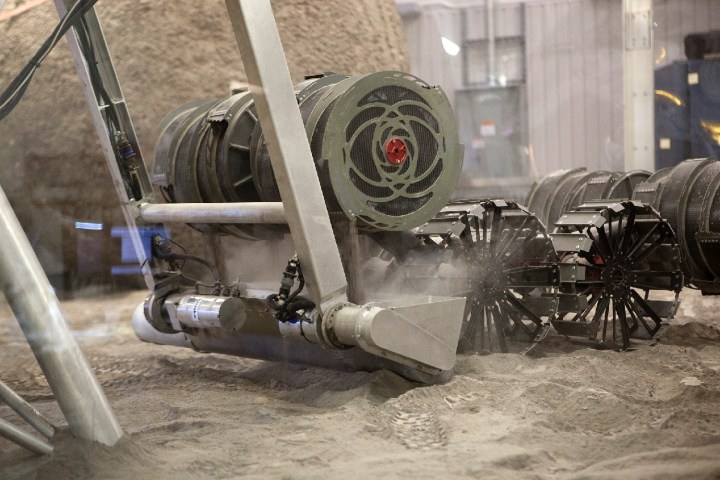
The idea of robots mining for dirt on Mars, which could then be transformed into water, oxygen, or rocket fuel, sounds like some futuristic sci-fi concept. But it’s an actual idea that NASA scientists are working to make a reality just a couple of decades from now. It’s part of research that could one day allow a Mars-based crew to return home to Earth after using up much of their fuel on the journey there. And while it’s all hypothetical right now, NASA has a prototype robot to underline how serious it is.
“RASSOR is a low-gravity excavation robot that NASA is currently prototyping and evaluating for potential future use on the Moon or on Mars,” Kurt Leucht, NASA software engineer at Florida’s Kennedy Space Center, told Digital Trends. “It’s a novel design because it is itself a very lightweight machine – because minimizing launch mass is a major focus in the rocket business – and yet it is still a very capable digging machine despite its low weight.”
RASSOR digs using small digging scoops that are mounted onto counter-rotating hollow bucket drums. It drives forward while digging in order to create a long slot-trench, and digs down deeper and deeper with each pass. The hope is that, as it digs down several feet beneath the surface, it will discover water/ice mixed in with the soil.

This water could then be filtered and deionized to produce water, or split into hydrogen and oxygen components to provide some of the raw materials needed for liquid rocket fuel.
“The processing plant will also collect carbon dioxide from the thin Mars atmosphere, and create methane rocket fuel using the Sabatier process,” Leucht said. “It’s basically an unmanned and fully autonomous gas station on the surface of Mars. It can create oxygen for breathing air. It can create liquid water for drinking. And it can create liquid methane and liquid oxygen rocket propellants for our return trip.”
In a recent article for IEEE Spectrum, Leucht cited the year 2038 as a possible date for this to take place. However, he noted that that this date is just notional at present — although he is hopeful it will come to fruition. “It’s very difficult for NASA, as a federal agency, to plan in detail more than just a few years out into the future,” he said. “Everything depends on funding and direction from our federal administration.”


